Part 8: The Kingkiller of Cádiz
Chapter 8 -The Kingkiller of Cádiz - 1164 to 1178In Rome, the heart of Christendom, Pope Innocent III has called a Great Council of the many kings of Europe. In the East, Jerusalem has been re-taken by the Saracens after nearly a century of Byzantine Orthodox rule, whilst in the West, the Reconquista was suffering setback after setback as the Moors gained traction. All across the world, Christianity was retreating into Europe, and the Pope was determined to see a halt to their losses.
The Age of the Crusades has begun.
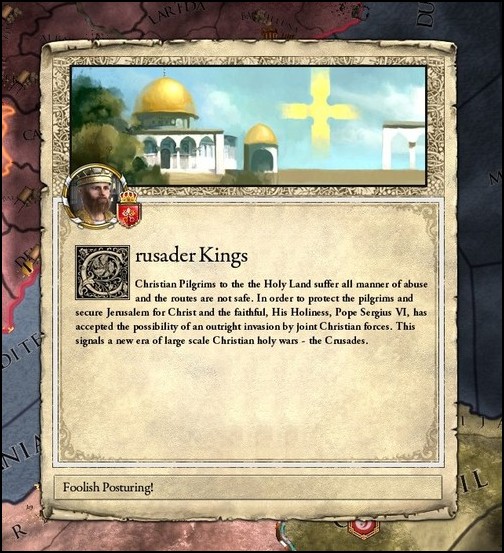
In Iberia, however, crusaders and ghazis have already been clashing for centuries now. This struggle is epitomised in the many wars between the Aftasid Sultanate and the Kingdom of Aragon, a conflict that has not yet come to an end, but which would determine the fate of Iberia for centuries to come.
And along the southern edge of the peninsula, the small but rich city of Cádiz was gradually gaining influence and power in the region, becoming a haven for refugees fleeing from the northern wars. Late in 1164, after the death of the widely-beloved Emir Masud, his secondborn son was confirmed as his heir and successor in an elaborate ceremony.

Emir Masud's territorial conquests were divided amongst his living sons upon his death, with Galind receing the Emirate itself, along with the sheikhdoms Cádiz, Malaga and Algeciras, whilst his brothers served as mere vassals.
The young emir was a shrewd and clever man, one who had idolised his father to no end, and who lusted after the same reputation. All men have their faults, however, and Galind's was greed. Greed for riches, greed for power, greed for an everlasting legacy. He had always been jealous of the special attention his father had paid to his older brother, but Admer was now dead and Galind was Emir, so who won in the end?
Even before the funeral prayers had come to an end, Galind began reforming the emirate in an attempt to further centralise it. Ever wary, he granted himself greater powers, such as the lower revocation of titles, thus beginning the long process of diminishing the influence his brothers and vassals held.
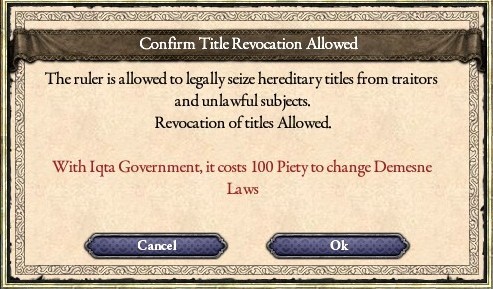
He also built upon the foundations set by his father by expanding the newly-established university in Cádiz, inviting all manner of people to study and teach at the House of Wisdom. As the institution became more and more famous, Galind encouraged and promoted the study of culture and the sciences, eager to reap the prestige benefits.
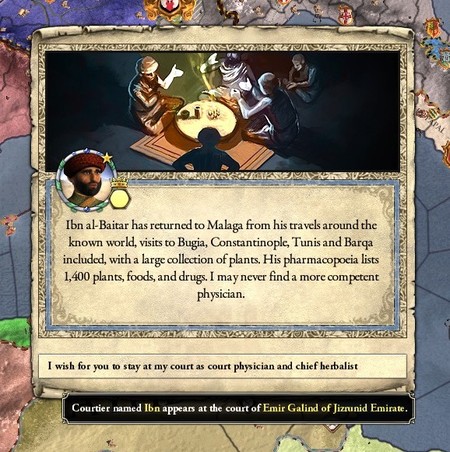
Galind's true passion, however, lay in the art of the sword. He had spent his youth obsessing about the grand exploits of Khalid bin Walid, who dealt blow after blow to the Sassanids and Byzantines, of Tariq bin Ziyad, who had first conquered Iberia for Islam, of Jawhar the Greek, who had conquered vast swathes of North African land and founded Cairo. His ambitions knew no end, and Galind was sure that one day, his name would dwell at those same heights.
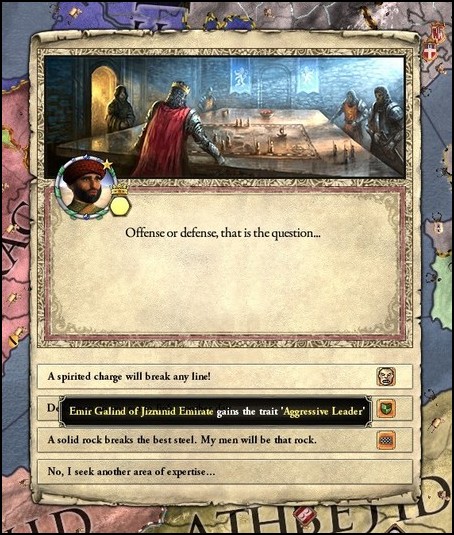
As emir, however, most of Galind's army would be drawn from his vassals' levies. They would field the greater part of his force, but Galind was also in the process of centralising the emirate around himself, so he began building a private standing army to lessen the influence that the aristocracy held.
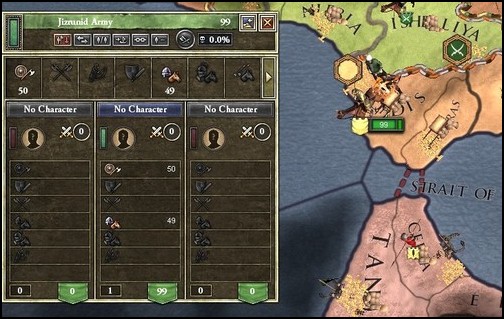
In June of 1170, Galind's firstborn son - Balashk - was born to him by his first wife, securing the dynastic line. This was quickly followed by another, with a boy by the name of Fath birthed to his second wife. Now that he had an heir and a spare, Emir Galind could finally go to war.
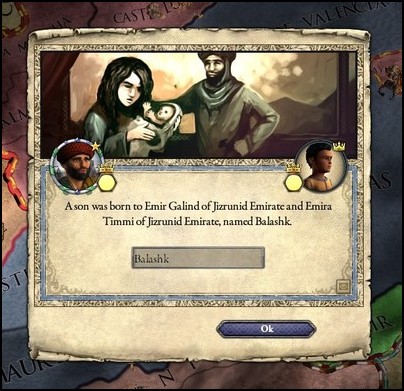
Galind wanted his name etched into the stone tablets of history, and he knew that the only way to do that was by besting a powerful, dominating force. So he set his eyes on the Kingdom of Aragon, who had recently emerged from a victorious war with the Aftasids, seizing the historic city of Córdoba.
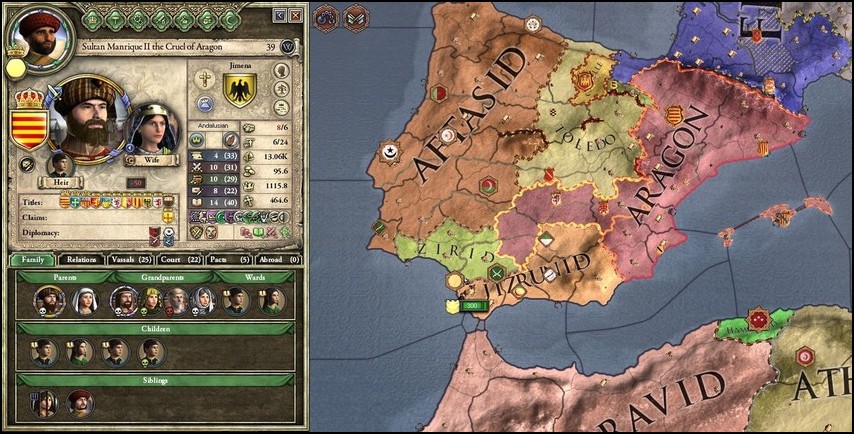
Emir Galind had waited most of his life to show the world what he was capable of, so he wasted no time in sending the declaration of war to the Aragonese King, raising his armies and delivering sermons as he gathered support for his endeavour. Córdoba was a Muslim city, and would be ruled by Muslims, or so he vowed.
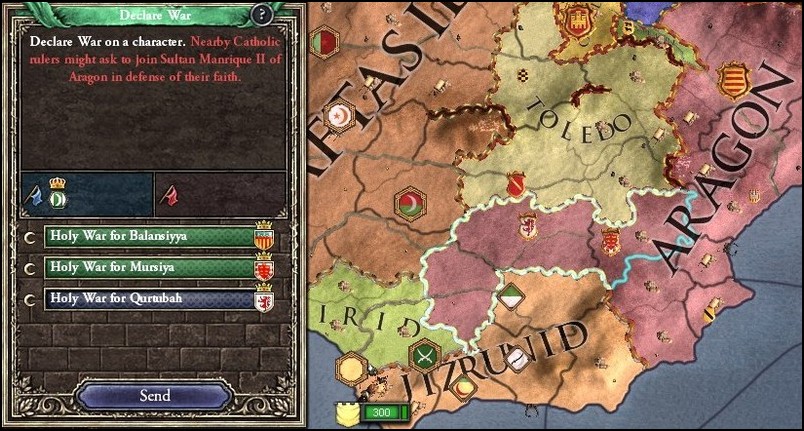
Galind's Moroccan allies were vital to his plans, of course, as they would be contributing most of the Muslim forces. The Almoravids, who had bled and died alongside the Jizrunids in countless wars, were quick to accept the call to arms.
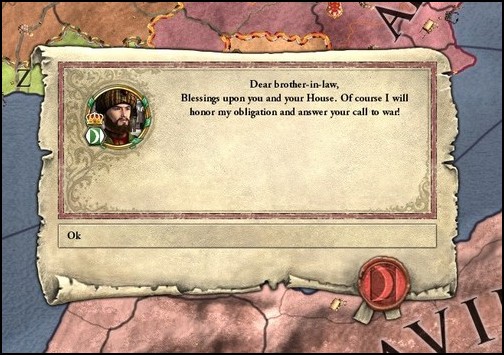
Bitter fighting quickly exploded all along the border as King Manrique led his army into Jizrunid territory. He had spent his entire reign repulsing attack after attack, so Manrique was no stranger to battle, with the king opting to seize the initiative and strike first. Over the first few weeks of the war, King Manrique led brutal sacks of cities dotting the Baetic Mountains, his army raping and pillaging the populace.
Galind didn't let himself be drawn into attacking the Aragonese army, however, no matter what atrocities they were dealing his people. Instead, he waited for the Morrocan army to make the crossing into Iberia and bolster his numbers before finally pushing forwards, engaging the Christian army in Jaén.
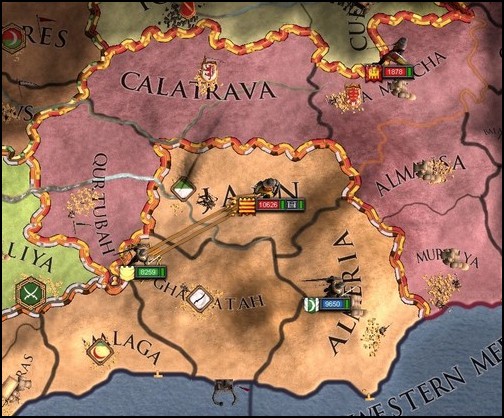
The first few hours of fighting were close and bloody, but Emir Galind managed to break the deadlock with a line-breaking charge, shattering the enemy formation and forcing them to flee.
In the midst of the stampede that followed, King Manrique himself was cut down and dragged through the mud, breaking every bone in his body. Emir Galind would later lay claim to the deed, though it's impossible to know who truly swung the sword, as nobody dared refute the victorious Emir's claim.

Galind didn't use the battle to simply shower himself in glory, however, he also learned a lot from it. Actually seeing his tactics play out on the field helped him understand the difficulties of rallying one's troops, of leading an organised retreat, of salvaging a pyrrhic victory. The young Emir learned lessons that would only make him a better fighter and commander, and he wasted no time in implementing this hard-won knowledge.
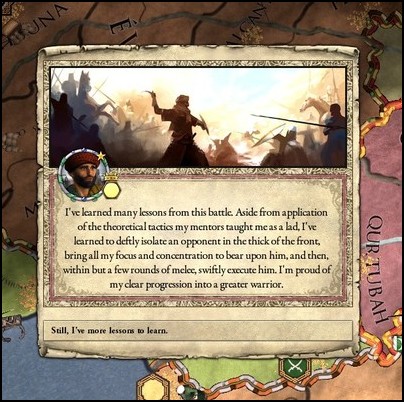
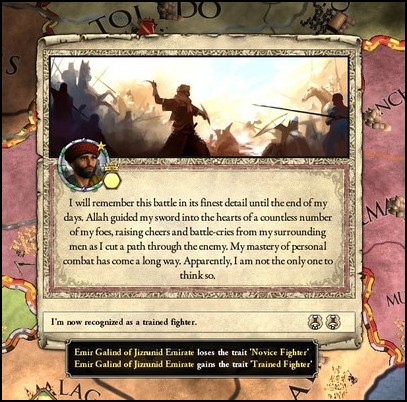
With their king dead and army destroyed, the Aragonese were forced into retreating back to their own territory. Further north, Manrique's teenage son (also named Manrique) was quickly crowned and sent south, with the nobles hoping he would be able to inspire his shattered troops.
Galind led his own army eastward and managed to pin down the Christians at Murcia, forcing them into another engagement.
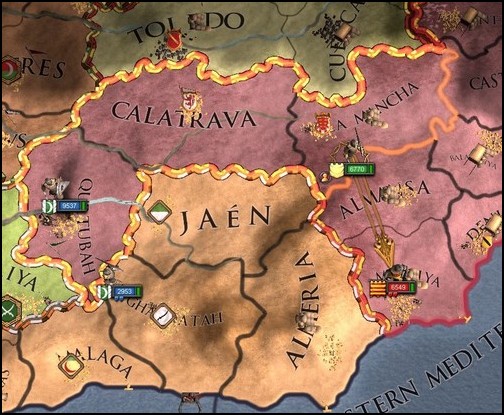
This battle was little more than a massacre, however, asEmir Galind easily flanked and routed the enemy army, once again forcing them to drop their weapons and flee northwards.
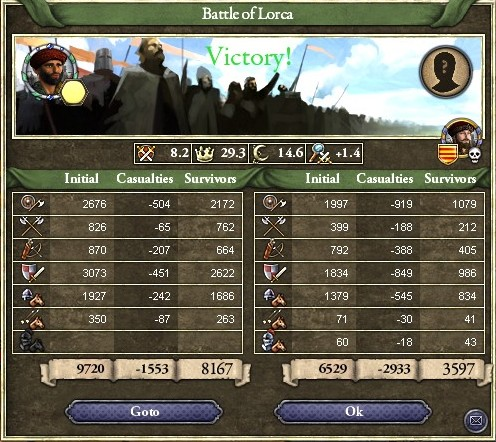
And the spoils didn't end there. Remarkably, the chaos and disarray of the battlefield had left a serious gap in enemy lines, and Emir Galind wasted no time in charging through this breach, surrounded by his guardsmen and retainers. After cleaving the enemy in two, the Emir sighted the royal pavilion of King Manrique himself, and didn't hesitate to collide into their ranks.
Ten minutes later, and dozens of bodies littered the pavilion, with the young king himself left undefended. He was little more than a teenager, but so was Galind, and the two nobles clashed in a furious storm of iron and steel. The duel was over as quickly as it began, and another king was left bleeding into the ground.
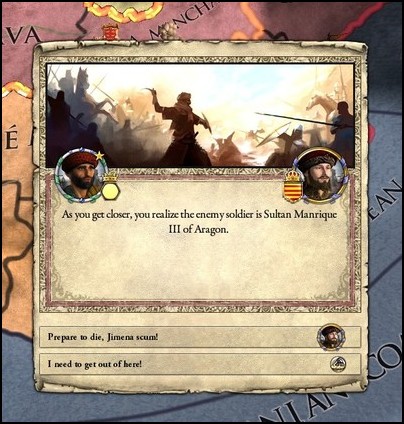
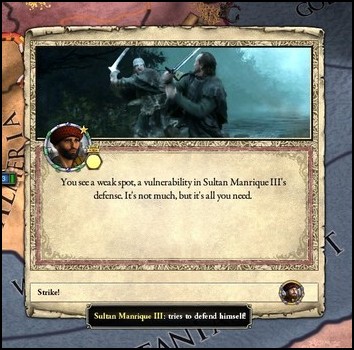
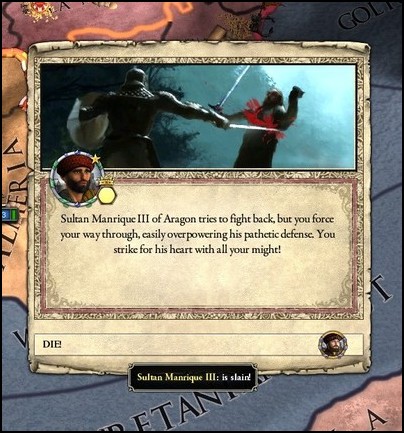
Of course, the fact that Galind had personally killed two Christian kings in battle earned him unimaginable fame and prestige throughout the Muslim world, where he would later be called "Galind King-killer".
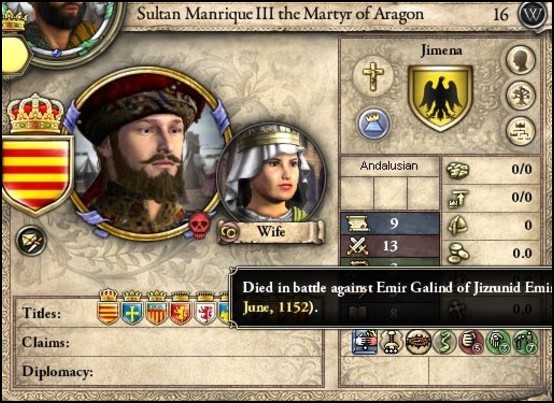
One might expect that the loss of two kings in such quick succession would demoralise the enemy, but this didn't happen with the Aragonese. Instead, furious and humiliated, the Christian nobility of Aragon pooled together every coin and every man they had, determined to stem the tide of Muslim victories. The neighbouring principalities of Toldeo and Castile also agreed to contribute to a new Christian army, and just a year later, a gigantic 18000-strong force set off on a march southward.
This gigantic army bore down on Emir Galind's army like a hurricane, far larger than his own, and led by far angrier men.
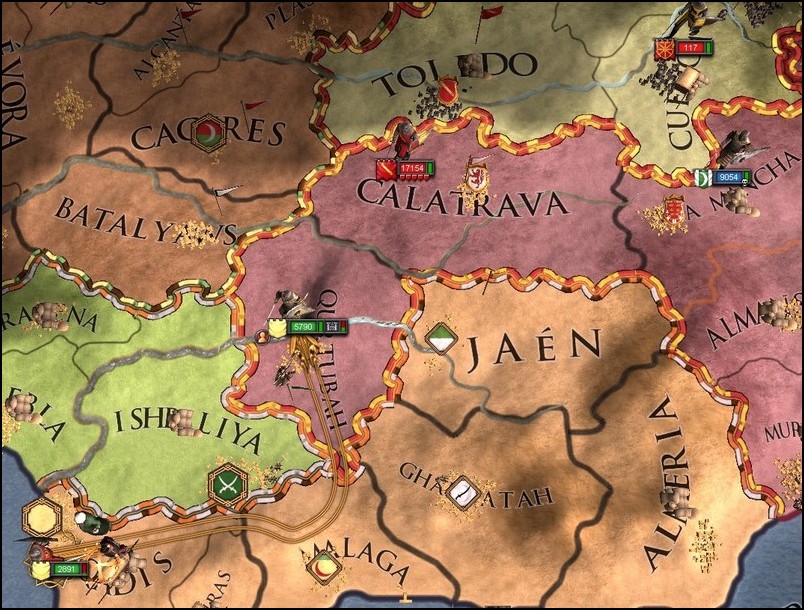
Luckily for Galind, the Almoravids quickly reinforced the battle, turning it from a slaughter to a bitterly-contested battle. The Christians were able to surround large parts of the Muslim army, but Emir Galind showcased his tactical brilliance once more when he manoeuvred his retinue to breach the enemy lines, ending the battle in a stalemate.

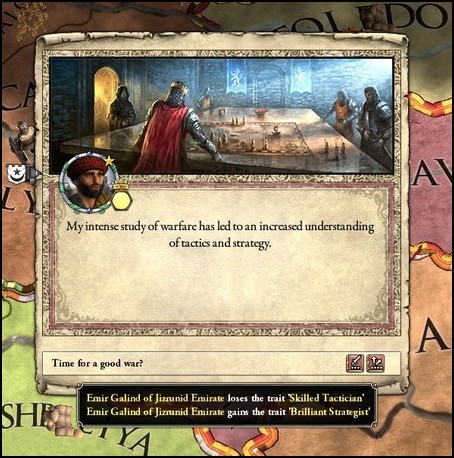
Less lucky, however, was the death of Sultan Umar in the midst of the fighting. The Almoravid sultan was one of Galind's staunchest supporters, but he was not popular in Morocco, and his death marked a succession crisis that turned North Africa into a battlefield.
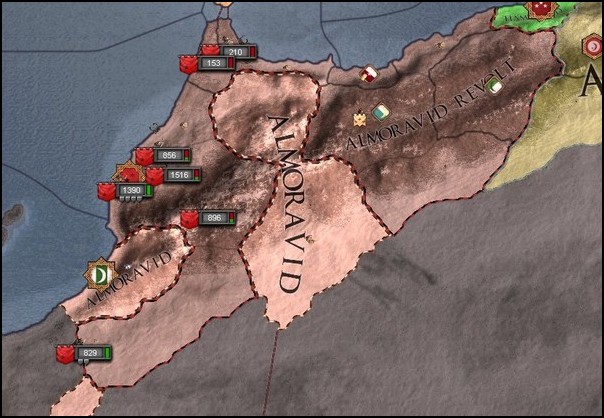
The Morrocan army was forced to retreat and return to Fes, leaving a weakened Cádizian army to somehow hold back the entire might of Christian Iberia. The Aragonese, who by now had managed to rally the army under their new king, did not need to be told what to do next.
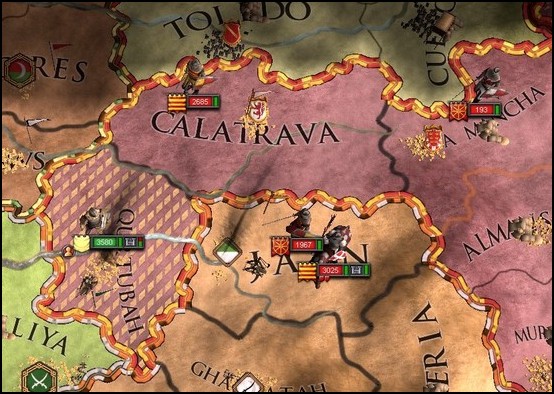
Galind was a brilliant strategist and a gifted commander, but even he could not defeat endless waves of the enemy, and he was forced to fall back after a day-long battle in which he lost half of his strength.
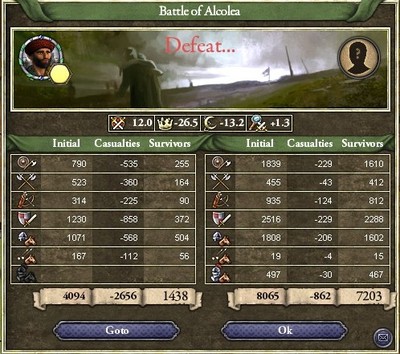
The tide was suddenly turning against him, and Galind realised that he would have to take out loans if he was to sustain the war effort. Many of the Cádizian generals pleaded with the Emir to sue for a favourable peace - the war had stretched on for almost ten years, and they were desperate to go home to their wives and sons, to tend their farms and estates, to sleep at night without fear of being killed before morn.
But Galind refused to even entertain the notion, sure that one more decisive victory would win him the entire war. One more victory, that was all he needed.

Unfortunately for the Emir, his vassals were right, and he should have struck a peace then and there. He would pay the price for that when the Christian armies forced him into another unfavourable battle, and despite slaying three enemy commanders, Galind were eventually routed and utterly crushed, leaving him with nothing. Galind himself barely escaped with his life, with the Christians chasing his retinue halfway back to Cádiz, determined to avenge the death of their kings.
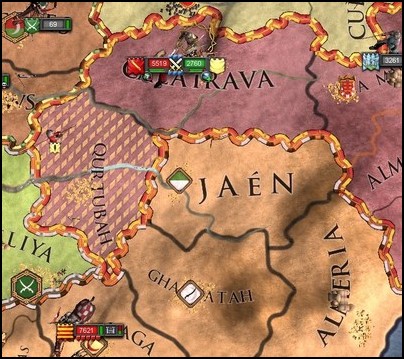
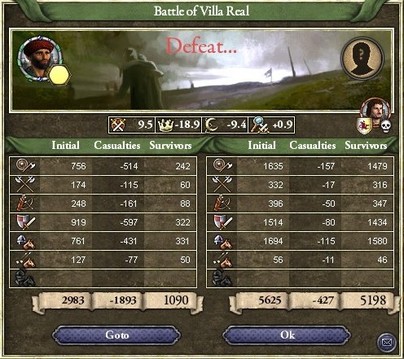
Over the following months, all of the gains made by Galind over the past few years were stripped away, as the Christians re-captured their occupied provinces and began pushing into Jizrunid territory, sacking and looting and burning and pillaging.
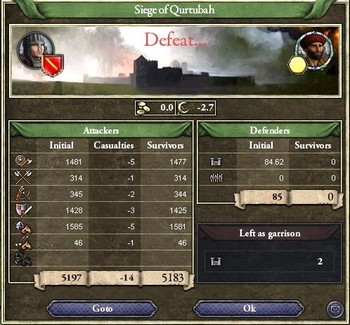
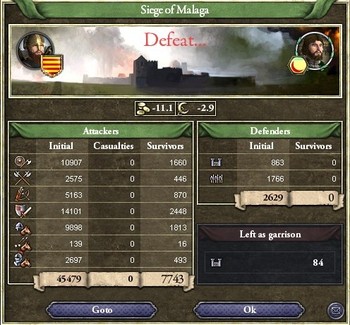
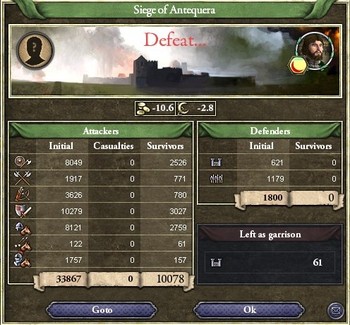
It was only now, with half of his emirate under occupation and his reputation in tatters, that Emir Galind sued for peace. After near a decade of devastating war, the terms of peace were never going to be lenient, with Galind's claims abandoned and heavy carts of gold and treasure journeying northward.
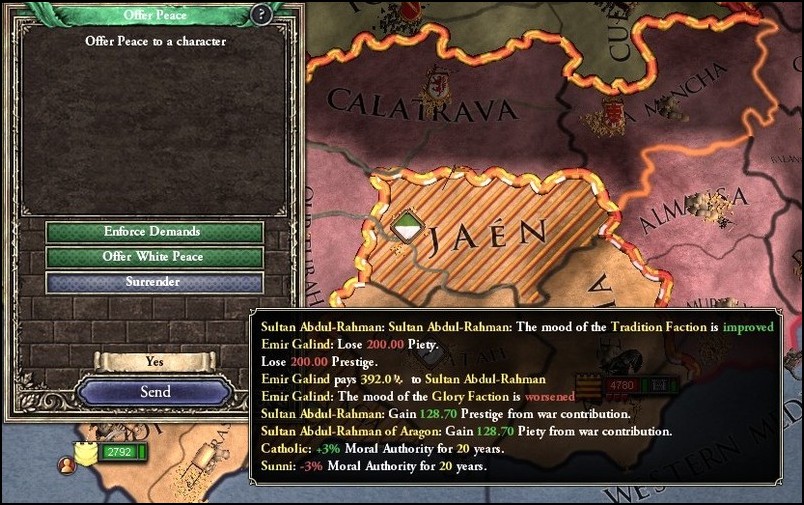

Emir Galind returned to Cádiz with his fame undermined and his sense of invulnerability shattered, but only more sorrow awaited him at the capital. Apparently, harem intrigues had once again escalated to the point of murder, and his own son had been stabbed to death after he had his mother's rival imprisoned.
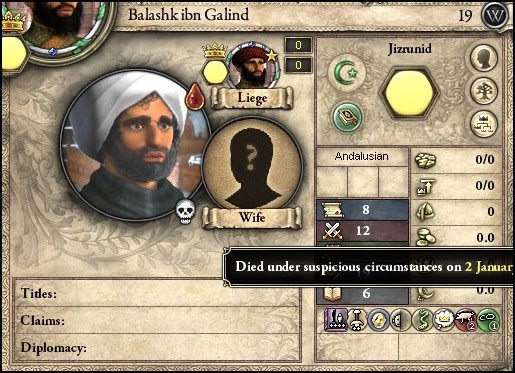
Even worse, scarcely a week after the peace treaty with the Christians had been signed, Galind's own brother demanded that he step down and hand the Emirate to him. Adfuns claimed that Galind had obviously lost the favour of Allah, and that Cádiz would require a firmer hand if it was to survive the difficult years ahead.
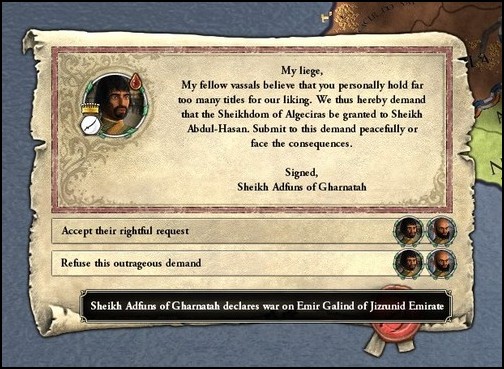
Emir Galind refused, of course, and half of his vassals rose up in revolt, switching their support to his brother. Disaster after disaster, that was all life had for Galind, it seemed. First, he had been humiliated by his losses in the war, then his eldest son had been murdered by one of his lovers, and now there was a serious possibility that his entire emirate would be stripped away from him.
There truly wasn't any way it could get much worse.

Or so he thought.